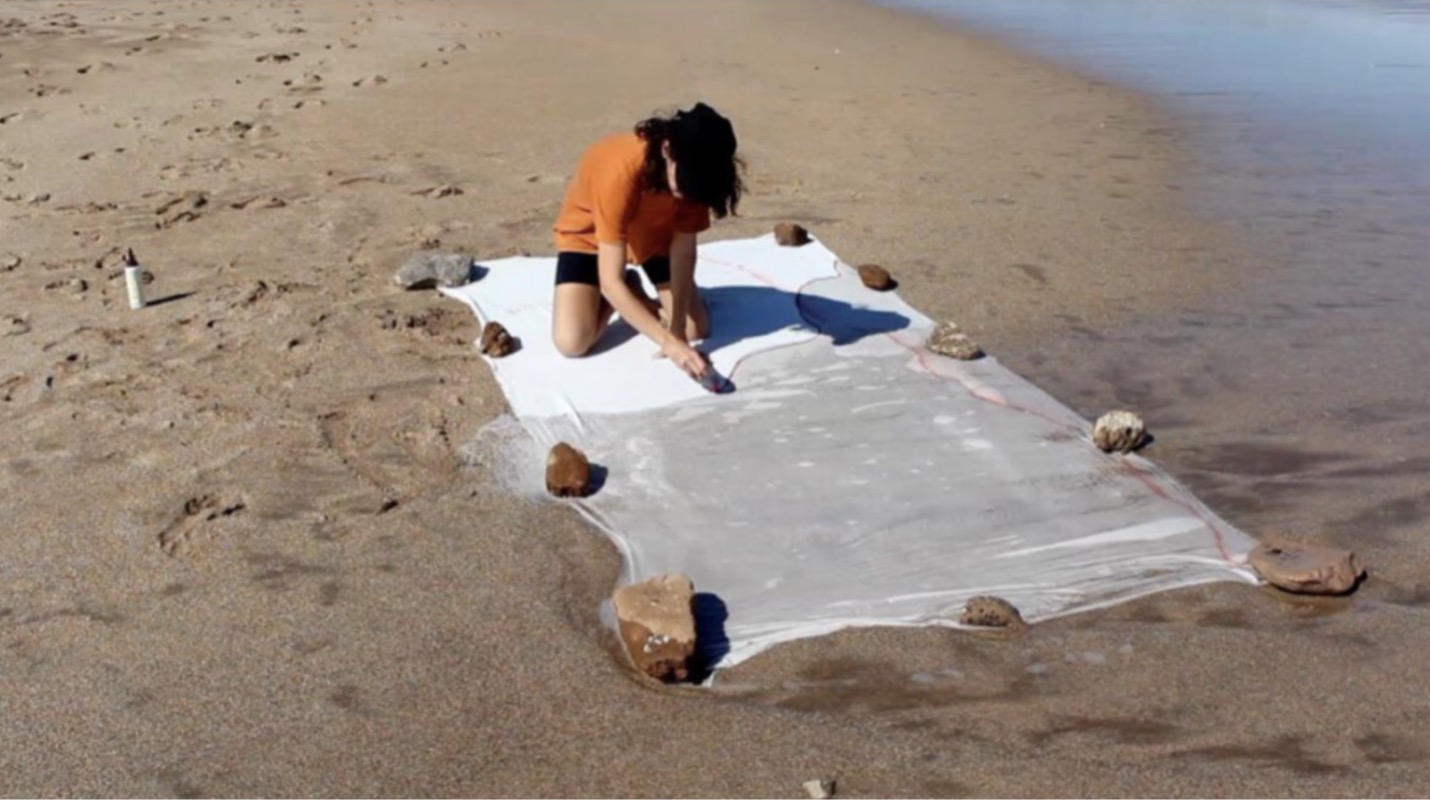Matthew Barrieau, a Harvard College junior majoring in comparative literature, recently led a practice tour of the Harvard Art Museums. Standing with a small group in front of German artist Max Beckmann’s Self-Portrait in Tuxedo, he invited visitors to look closely at the work.
“Let’s pause for a moment and take a look, and see what kind of response this painting evokes for us,” Barrieau said. After a minute or two, one tour participant offered her opinion that the work looked like a mirror image of Beckmann, as if you could imagine him staring directly at his reflection. Barrieau nodded and responded, “It’s funny, when I stand in front of this painting, I often adopt the same posture as him.” He then launched into a short description of Beckmann’s art and the work itself, often pausing to ask for more insight and thoughts from the small group gathered around him, and drawing connections between Self-Portrait in Tuxedo and other works nearby.
Even though it was just a trial run, the interactive experience was representative of Barrieau’s personalized museum tours—and in fact, of all tours being led by Harvard students. As part of the new student guide program, Harvard undergraduates have just begun to offer 50-minute tours to visitors, a free service with admission to the museums. Tours for up to 15 people will be offered on Tuesdays, Fridays, Saturdays, and Sundays, each led by a student with academic interests as diverse as anthropology, neurobiology, classics, and art history.
“As part of the engine behind teaching and learning at the Harvard Art Museums, the student guide program is a unique way for us to open up our collections and share expertise with the public through the lens of Harvard students,” said David Odo, the museums’ director of student programs and research and curator for university collections initiatives. “We focus equally on the training and education of our students and the conversations they will have with the public, whom we hope will benefit from the students’ individual experiences working with our curators, staff, and faculty.”
The 15 student guides were chosen through a competitive application process. They began preparing their tours last fall, well before the museums reopened. Working closely with Odo and each other in group meetings and via collaborative online software, they learned about various ways to present individual objects, as well as methods for engaging visitors in discussions about those works. Students also heard presentations from curators and researched individual works by consulting curatorial files.
The group chose to use the concept of “revolution” as a starting point for each tour. “There are many ways you can interpret revolution” in the context of art museums, Barrieau said, but the concept “gave us the potential to create a unified tour experience, which is what we really want to give visitors.” From there, however, tours are as unique as the guides leading them, and unusual in that they’re almost completely guided by the students’ own interests.
Barrieau’s tour, for instance, is organized around the theme of patronage. By visiting portraits such as Beckmann’s, as well as commissioned works like Mark Rothko’s Harvard Murals, Barrieau hopes to give visitors a better understanding of “the way in which patronage has been revolutionized [in an art context], and especially by university art museums like ours.”
Krystle Leung, a senior majoring in chemistry, offers a different spin on “revolution” through her tour, which highlights circles in paintings, Islamic ceramics, drawings, and a “word portrait” by the late contemporary artist Felix Gonzalez-Torres. That work, "Untitled" (Portrait of Michael Jenkins), “really helped me rethink what a portrait is,” Leung said. Last year, she was part of a group of student guides invited to add text to the work, which is meant to change each time it is exhibited. “The piece was personally revolutionary to me in terms of understanding a portrait,” Leung said. “My goal [in including “Untitled”] is to engage the audience in a discussion of what a portrait is, and what it does and doesn’t show.”
The tours officially began for the public on February 17, after student guides experienced a final preparatory step: leading practice visits for their peers from the museums’ Student Board (as well as curators and museums staff). Students on the board are a link between the museums and the greater university community, and they stood in for museum visitors on the guides’ preparatory tours.
Student board member Rachel Thompson, a junior pursuing a joint major in social anthropology and comparative literature, said she had personally “gotten a lot out of the tours,” even in her test-audience capacity. “I know what parts of the museums I naturally gravitate to,” Thompson said, “but it’s a lot of fun to have someone take me to a different area and make me look at a painting that I’ve never looked at before.”
As the student guides ease into their schedules and the public gets to experience the diversity of their tours, we hope that these sorts of eye-opening experiences will become even more common.
Student-led tours are offered on Tuesdays and Fridays at 2pm, and Saturdays and Sundays at 11am, through April 28, 2015, and are free with museums admission. Tours are limited to 15 people; no registration is required, but tours are available on a first-come, first-served basis. Please meet in the Calderwood Courtyard, in front of the digital screens next to the Visitor Services desk. Please note: There will be no tours offered the week of March 16, 2015. For specific tour dates, check out our calendar www.harvardartmuseums.org/visit/calendar.



